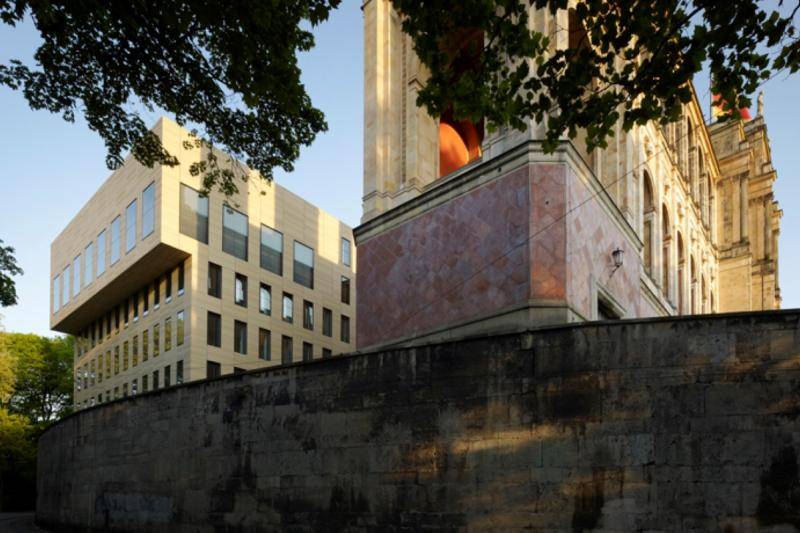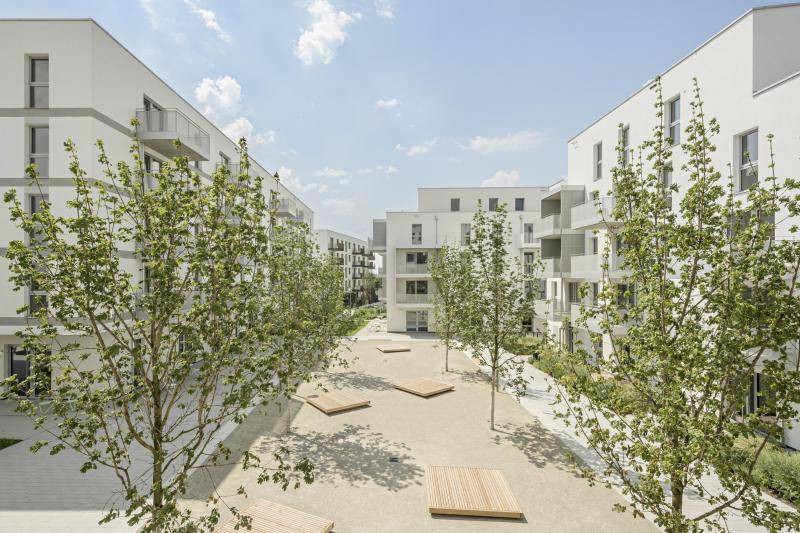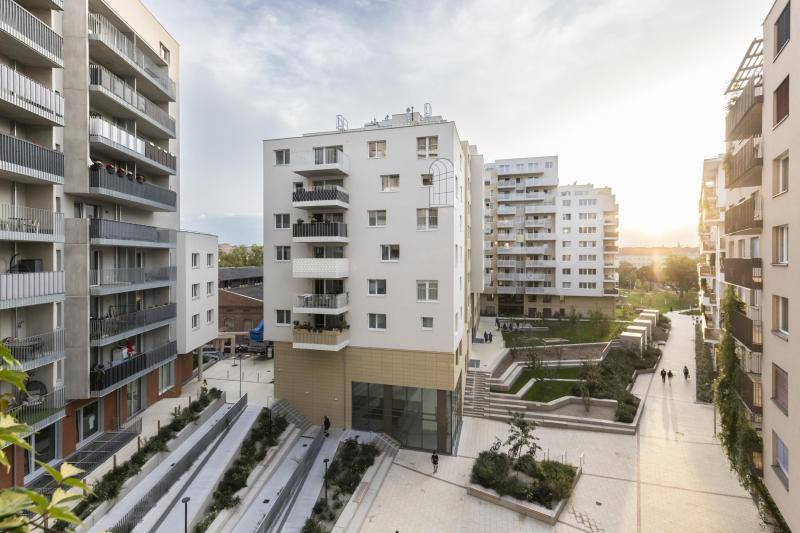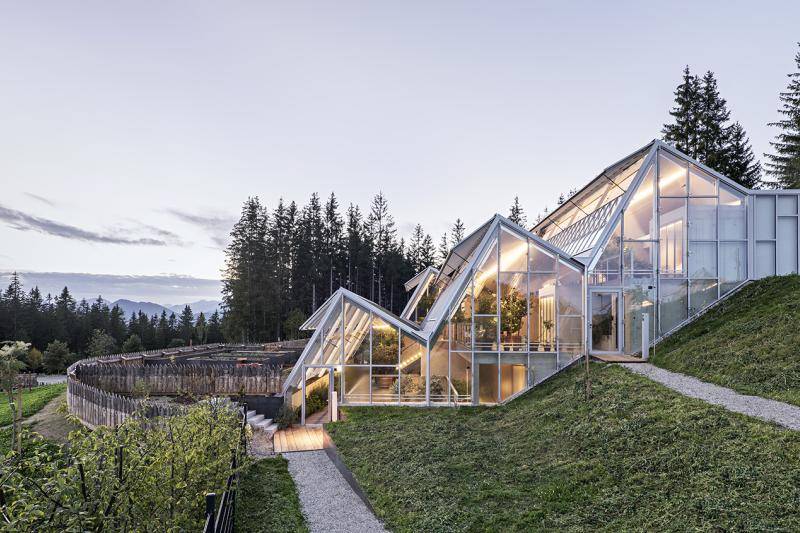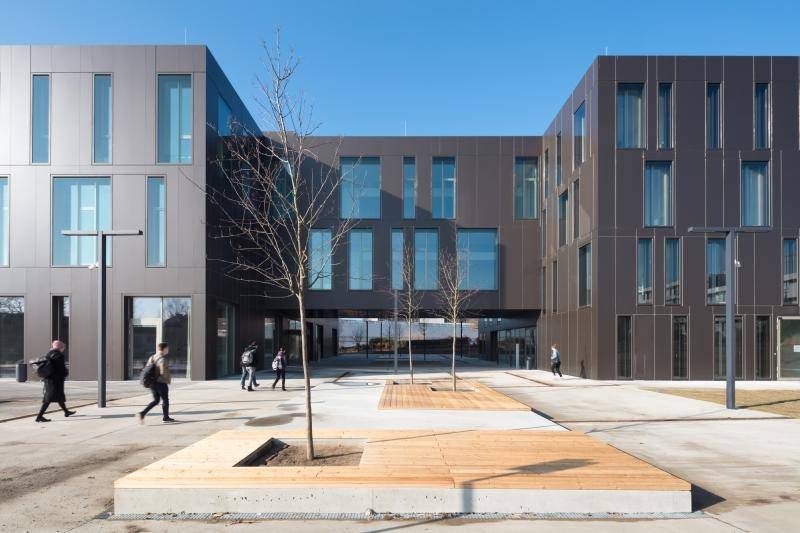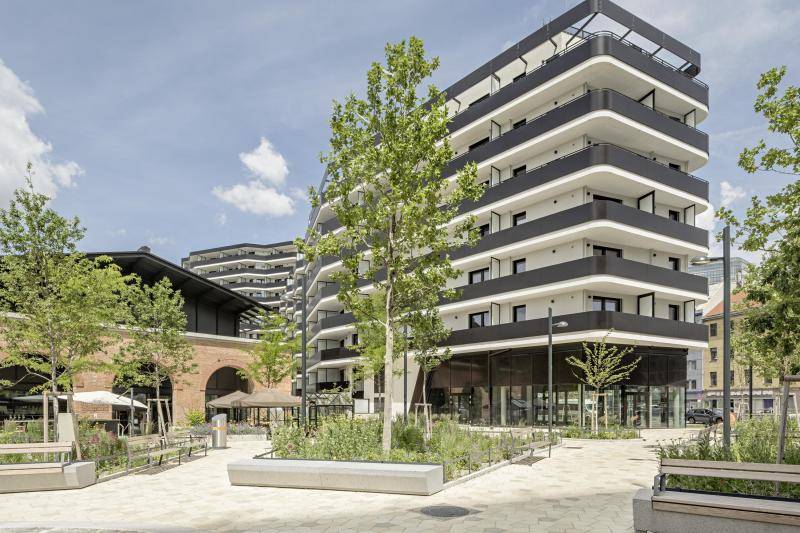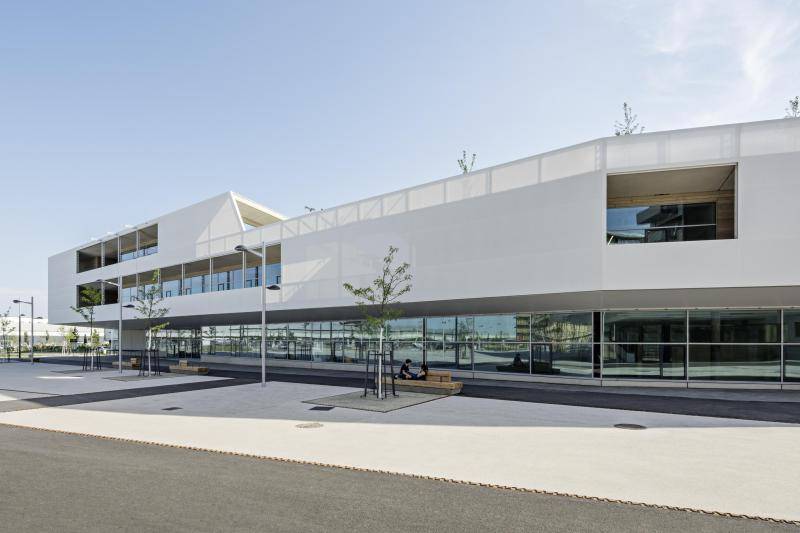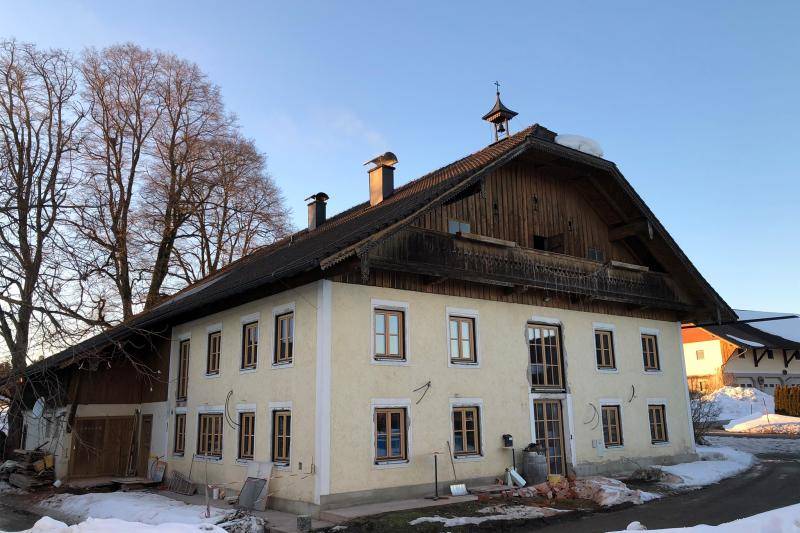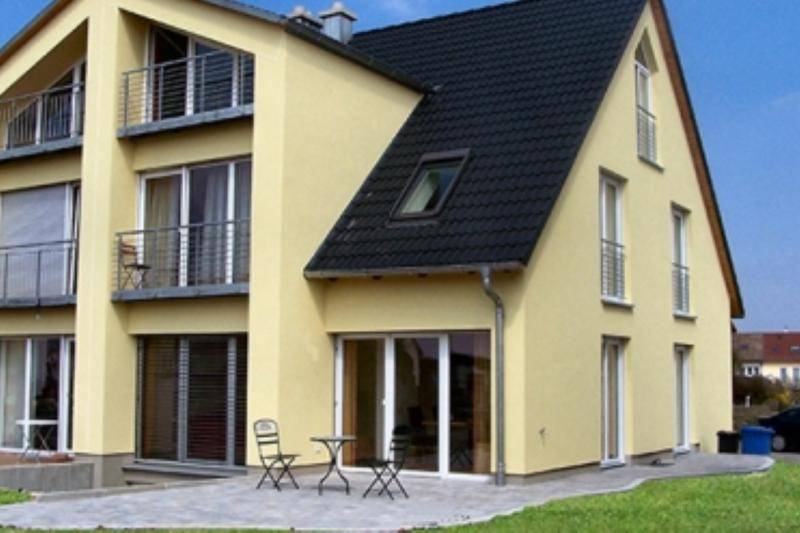Bildungscampus Deutschordenstraße, Wien
The new Deutschordenstraße education campus in Vienna's Penzing district is another completely fossil-free educational building that demonstrates how pedagogy, architecture, and energy efficiency can work together. Based on plans by Shibukawa Eder Architects, a modern campus was built on a 3.2-hectare site near Hütteldorf train station, which was awarded the Green & Blue Building Award for its overall ecological and integrative quality shortly after completion.
2022
30.000 m²
12.000 m²
Stadt Wien
Bau Beton
13.000 m³

The five-story building also serves as a sound barrier to the adjacent railway line and, with a usable area of around 12,000 m², houses a twelve-group kindergarten unit, two all-day schools with 29 classes, a music school, and rooms for special educational support. In total, the campus comprises 40 classrooms and common rooms and offers child-friendly, barrier-free learning environments.
One focus of the project is the energy concept, which relies entirely on renewable sources. Heat pumps, geothermal energy with 75 depth probes at 110 meters, component activation, and a photovoltaic system are used. Heat distribution via the activated concrete components ensures uniform heating and cooling of the building, while the ground is thermally balanced in summer through regeneration. The maximum heating capacity of the heat pump system is 375 kW. This means that the campus is climate-friendly all year round.
The combination of fossil-free building services and high-quality room acoustics presented a particular planning challenge. In the area of special education in particular, it was essential to create an acoustic environment that provides the best possible support for hearing-impaired children and children with German as a second language. Despite suspended ceilings and high acoustic requirements, component activation was successfully integrated. The result is bright, quiet learning spaces with a pleasant indoor climate and optimal audibility.
The project was implemented as a public-private partnership (PPP) by the City of Vienna. The cooperation between the client, planning, and execution teams enabled precise coordination of architecture, building technology, and building physics.
© Text: Gisela Gary; Z+B Magazine; modified
